#IOT gateway devices
Explore tagged Tumblr posts
Text

Discover the top 5 reasons why RS-485 IoT Gateways are essential for efficient and reliable industrial automation systems. Boost performance today!
#RS 485 IoT Gateway Solutions#Industrial IoT Gateway Solutions#industrial iot gateway devices#IOT gateway devices#IIoT gateway devices#MQTT IoT gateway#iot gateway manufacturers#Top IoT gateway companies#IoT gateway company#iot gateway solutions#modbus gateway#rs485 gateway#rs485 protocol#modbus rs485#modbus communication protocol#rs485 iot gateway#modbus protocol#iot gateway
0 notes
Text
Why IoT Gateway Is Key to Modern Water Management
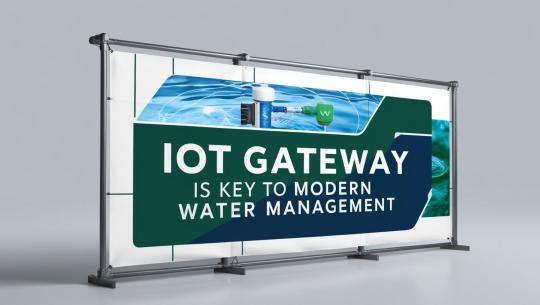
Water is one of the most critical natural resources for life, agriculture, and industries. With growing demand and climate-related challenges, managing water sustainably is more important than ever. This is where modern technologies like the IoT gateway play a crucial role in bridging traditional systems with real-time, connected water management solutions.
IoT gateways are helping organizations collect, process, and act on water data in ways that were not possible before. In this blog, we’ll explore how an IoT gateway works, its role in sustainable water management, and how it supports various use cases such as IoT tank level monitoring, industrial IoT, and IoT remote monitoring solutions.
What Is an IoT Gateway?
An IoT gateway is a bridge between IoT devices and cloud-based systems or local servers. It gathers data from sensors and devices, processes it locally or forwards it to the cloud for analytics. This reduces latency, improves performance, and enhances data security.
In water systems, the IoT gateway connects sensors monitoring flow, pressure, tank levels, and water quality. It ensures the data is reliable, timely, and actionable, which is vital for smart and sustainable decisions.
Why Water Systems Need an IoT Gateway
Water infrastructure often includes remote or hard to access areas like reservoirs, pumping stations, tanks, and treatment plants. These areas generate huge volumes of data, but without a reliable gateway, this data may not be collected efficiently.
Here’s why using an IoT gateway in water systems is essential:
Real-time data collection from multiple field sensors
Edge processing to filter and analyze data before transmission
Stable connectivity even in remote or rural areas
Integration with SCADA, cloud platforms, and mobile apps
Support for various communication protocols (LoRa, NB-IoT, 4G, Wi-Fi, Ethernet)
By using an IoT gateway, organizations can avoid manual data handling and get access to continuous monitoring and insights.
How IoT Gateway Enables Sustainable Water Management
1. Real-Time Water Monitoring
IoT gateways enable real-time monitoring of key parameters like water flow, consumption, tank levels, and leakage. When integrated with IoT tank level monitoring systems, they help ensure that tanks are neither underfilled nor overflowing, saving water and energy.
With real-time alerts, water managers can detect unusual consumption patterns or leaks early, reducing waste and improving system efficiency.
2. Water Quality Tracking
Maintaining water quality is crucial for both drinking and industrial use. Sensors that measure parameters such as pH, turbidity, TDS, and chlorine levels can feed data to the IoT gateway. The gateway then transmits this data securely to monitoring systems for review.
This enables faster decision-making and ensures that contaminated water doesn't reach consumers.
3. Smart Irrigation Control
In agriculture, sustainable water use is a major concern. With IoT gateways, smart irrigation systems can operate based on soil moisture levels, weather forecasts, and crop type. The gateway gathers and processes this data to automate irrigation, reducing overwatering and saving valuable resources.
This setup also allows integration with IoT device monitoring tools that track the health of irrigation pumps, valves, and field sensors.
Integration with Industrial IoT
Water usage in industries can be intense and unpredictable. An IoT gateway helps bring water monitoring into the world of industrial IoT. It enables factories and processing plants to:
Track water usage by process or department
Automate usage reporting and billing
Monitor water pressure and temperature in real time
Ensure compliance with environmental regulations
For example, a manufacturing plant using a large volume of water can set usage limits, detect equipment malfunctions, and optimize water recycling systems through the gateway’s continuous monitoring features.
Energy Efficiency in Water Operations
Sustainable water management also means using less energy. Water pumping and treatment facilities consume significant amounts of electricity. By using an IoT gateway, facilities can track energy consumption, detect inefficiencies, and make adjustments to save power.
Gateways can combine data from energy meters and water pumps, enabling operators to correlate energy use with water output. This insight helps reduce carbon emissions and operating costs.
Remote Monitoring and Predictive Maintenance
Thanks to the IoT Remote Monitoring Solution, water systems no longer need manual checks. The IoT gateway makes it possible to track pumps, tanks, pipelines, and filtration units from a central dashboard.
If a motor is running hotter than usual or if water levels fall below a threshold, the gateway triggers alerts to maintenance teams. This helps avoid failures and reduces downtime.
Moreover, predictive maintenance becomes easier when historical data is collected through the gateway and analyzed over time. You can know when to service equipment before it breaks down.
Scalable and Secure Water Management
Scalability is another benefit of using an IoT gateway. Whether you’re managing 10 or 10,000 sensors, the gateway acts as a middle layer that handles data efficiently.
Also, gateways support secure data transmission, ensuring that sensitive water usage or operational data is not exposed to threats. Most modern gateways include:
Data encryption
Authentication protocols
OTA (Over-the-Air) updates
Firewall support
These features are crucial for secure IoT device management and ensure long-term reliability of the system.
Use Case: Smart City Water Network
In a smart city project, municipal bodies can use IoT gateways to connect distributed sensors across water tanks, treatment plants, pipelines, and public taps. The gateway aggregates all the data, allowing for:
Leak detection in underground pipelines
Fair billing through usage-based metering
Reducing non-revenue water
Ensuring 24x7 supply in underserved areas
This system can work alongside IoT tank level monitoring to prevent overflow in urban storage tanks.
Benefits of Using IoT Gateway in Water Management
Water is one of the most critical natural resources for life, agriculture, and industries. With growing demand and climate-related challenges, managing water sustainably is more important than ever. This is where modern technologies like the IoT gateway play a crucial role in bridging traditional systems with real-time, connected water management solutions.
IoT gateways are helping organizations collect, process, and act on water data in ways that were not possible before. In this blog, we’ll explore how an IoT gateway works, its role in sustainable water management, and how it supports various use cases such as IoT tank level monitoring, industrial IoT, and IoT remote monitoring solutions.
What Is an IoT Gateway?
An IoT gateway is a bridge between IoT devices and cloud-based systems or local servers. It gathers data from sensors and devices, processes it locally or forwards it to the cloud for analytics. This reduces latency, improves performance, and enhances data security.
In water systems, the IoT gateway connects sensors monitoring flow, pressure, tank levels, and water quality. It ensures the data is reliable, timely, and actionable, which is vital for smart and sustainable decisions.
Why Water Systems Need an IoT Gateway
Water infrastructure often includes remote or hard to access areas like reservoirs, pumping stations, tanks, and treatment plants. These areas generate huge volumes of data, but without a reliable gateway, this data may not be collected efficiently.
Here’s why using an IoT gateway in water systems is essential:
Real-time data collection from multiple field sensors
Edge processing to filter and analyze data before transmission
Stable connectivity even in remote or rural areas
Integration with SCADA, cloud platforms, and mobile apps
Support for various communication protocols (LoRa, NB-IoT, 4G, Wi-Fi, Ethernet)
By using an IoT gateway, organizations can avoid manual data handling and get access to continuous monitoring and insights.
How IoT Gateway Enables Sustainable Water Management
1. Real-Time Water Monitoring
IoT gateways enable real-time monitoring of key parameters like water flow, consumption, tank levels, and leakage. When integrated withIoT tank level monitoring systems, they help ensure that tanks are neither underfilled nor overflowing, saving water and energy.
With real-time alerts, water managers can detect unusual consumption patterns or leaks early, reducing waste and improving system efficiency.
2. Water Quality Tracking
Maintaining water quality is crucial for both drinking and industrial use. Sensors that measure parameters such as pH, turbidity, TDS, and chlorine levels can feed data to the IoT gateway. The gateway then transmits this data securely to monitoring systems for review.
This enables faster decision-making and ensures that contaminated water doesn't reach consumers.
3. Smart Irrigation Control
In agriculture, sustainable water use is a major concern. With IoT gateways, smart irrigation systems can operate based on soil moisture levels, weather forecasts, and crop type. The gateway gathers and processes this data to automate irrigation, reducing overwatering and saving valuable resources.
This setup also allows integration with IoT device monitoring tools that track the health of irrigation pumps, valves, and field sensors.
Integration with Industrial IoT
Water usage in industries can be intense and unpredictable. An IoT gateway helps bring water monitoring into the world of industrial IoT. It enables factories and processing plants to:
Track water usage by process or department
Automate usage reporting and billing
Monitor water pressure and temperature in real time
Ensure compliance with environmental regulations
For example, a manufacturing plant using a large volume of water can set usage limits, detect equipment malfunctions, and optimize water recycling systems through the gateway’s continuous monitoring features.
Energy Efficiency in Water Operations
Sustainable water management also means using less energy. Water pumping and treatment facilities consume significant amounts of electricity. By using an IoT gateway, facilities can track energy consumption, detect inefficiencies, and make adjustments to save power.
Gateways can combine data from energy meters and water pumps, enabling operators to correlate energy use with water output. This insight helps reduce carbon emissions and operating costs.
Remote Monitoring and Predictive Maintenance
Thanks to the IoT Remote Monitoring Solution, water systems no longer need manual checks. The IoT gateway makes it possible to track pumps, tanks, pipelines, and filtration units from a central dashboard.
If a motor is running hotter than usual or if water levels fall below a threshold, the gateway triggers alerts to maintenance teams. This helps avoid failures and reduces downtime.
Moreover, predictive maintenance becomes easier when historical data is collected through the gateway and analyzed over time. You can know when to service equipment before it breaks down.
Scalable and Secure Water Management
Scalability is another benefit of using an IoT gateway. Whether you’re managing 10 or 10,000 sensors, the gateway acts as a middle layer that handles data efficiently.
Also, gateways support secure data transmission, ensuring that sensitive water usage or operational data is not exposed to threats. Most modern gateways include:
Data encryption
Authentication protocols
OTA (Over-the-Air) updates
Firewall support
These features are crucial for secure IoT device management and ensure long-term reliability of the system.
Use Case: Smart City Water Network
In a smart city project, municipal bodies can use IoT gateways to connect distributed sensors across water tanks, treatment plants, pipelines, and public taps. The gateway aggregates all the data, allowing for:
Leak detection in underground pipelines
Fair billing through usage-based metering
Reducing non-revenue water
Ensuring 24x7 supply in underserved areas
This system can work alongside IoT tank level monitoring to prevent overflow in urban storage tanks.
Benefits of Using an IoT Gateway in Water Management
Real-time Monitoring:
Allows operators to track water systems in real time, identifying issues like leaks or overuse quickly.
Helps reduce waste and avoid expensive repairs by addressing problems early.
Faster Decision Making:
Uses edge computing to process data locally and make quick decisions.
Can trigger actions like turning off pumps or sending alerts about equipment issues immediately.
Support for Different Devices:
Converts different communication signals into a unified format, making it easier to connect various devices and sensors.
Allows easy system growth by adding more sensors or devices as needed.
Remote Monitoring:
Enables operators to monitor water systems from anywhere without needing to be on-site.
Saves time and resources, especially for large-scale systems like city water networks or agricultural irrigation.
Predicting Problems Before They Happen:
Analyzes data to spot early signs of equipment issues, like malfunctioning pumps or pipes.
Helps fix problems before they cause significant damage, reducing downtime and repair costs.
Secure Communication:
Ensures that data shared between devices and the central system is encrypted and protected.
Keeps data safe from unauthorized access or hacking, maintaining system trust and security.
Easily Scalable:
Makes it simple to add new sensors or devices as the water system expands.
Ensures the system remains reliable and efficient even as it grows.
Final Thoughts
As water scarcity continues to grow globally, adopting technology for better water use is no longer optional, it’s necessary. The IoT gateway acts as a central piece in the puzzle of sustainable water management, making data-driven decisions possible for agriculture, cities, and industries alike.
By enabling seamlessIoT device monitoring, supporting industrial IoT applications, and integrating with IoT remote monitoring solutions, IoT gateways are transforming how we manage water systems.
Whether you're a municipal planner, a farmer, or an industrial operator, investing in a reliable IoT gateway is a step toward smarter, more sustainable water use.
Final Thoughts
As water scarcity continues to grow globally, adopting technology for better water use is no longer optional, it’s necessary. The IoT gateway acts as a central piece in the puzzle of sustainable water management, making data-driven decisions possible for agriculture, cities, and industries alike.
By enabling seamless IoT device monitoring, supporting industrial IoT applications, and integrating with IoT remote monitoring solutions, IoT gateways are transforming how we manage water systems.
Whether you're a municipal planner, a farmer, or an industrial operator, investing in a reliable IoT gateway is a step toward smarter, more sustainable water use.
0 notes
Text
Distribution Transformer Monitoring
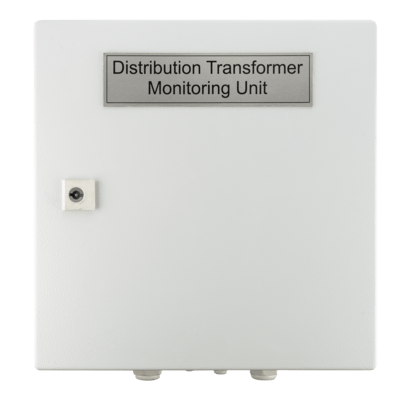
https://www.cmsgp.com/distribution-transformer-monitoring.php
Welcome to CMSGP, the most trusted and reputed distribution transformer monitoring manufacturer
At CMSGP, we are proud to be recognized as one of the most reliable names in Distribution Transformer Monitoring solutions. With over 20 years of proven expertise, we have become a key player in the industrial automation space. Known for our innovation and quality-driven approach, we are the preferred partner for top industries across India, delivering advanced monitoring technologies and exceptional service.
Distribution Transformer Monitoring System
Distribution Transformer Monitoring plays a critical role in enhancing grid efficiency and ensuring the long-term performance of transformers. These systems offer real-time insights into crucial metrics such as load conditions, temperature, oil levels, and overall power quality. By integrating IoT sensors with advanced data analytics, these monitoring solutions allow utilities to detect potential faults early, extend asset life, and reduce unexpected downtime. The result is a smarter, more efficient power distribution network with lower maintenance costs and increased reliability.
Our Product Portfolio
CMSGP provides an extensive array of industrial communication and monitoring solutions tailored for the energy and automation sectors. Our offerings include meter interface modems, data concentrator units, industrial 4G routers, RTUs, edge gateways, and integrated gateways. Every product is rigorously tested to meet stringent performance and safety standards. We also offer custom engineering to ensure our devices align precisely with your operational and infrastructure needs.
Delivering Quality Products
Quality is at the heart of everything we do. As a trusted provider of Distribution Transformer Monitoring systems, CMSGP is committed to excellence at every phase from design to deployment. Our manufacturing processes follow strict quality control protocols to ensure that each product delivers long-term durability and optimal performance. This dedication to superior product quality helps us eliminate inefficiencies and consistently exceed client expectations.
Constant Innovation
Innovation fuels our progress. Our commitment to continuous improvement enables us to develop Distribution Transformer Monitoring systems that set new benchmarks for reliability and performance. By minimizing downtime and enhancing the resilience of grid infrastructure, our solutions empower businesses to stay ahead in a competitive energy market. We constantly invest in R&D to provide smarter, more adaptive systems that elevate operational excellence.
State-of-the-Art Production and Scalable Operations
We utilize the latest manufacturing technologies to deliver scalable and precise Distribution Transformer Monitoring systems. Our production capabilities are built to handle both small-scale custom projects and large infrastructure deployments with ease. By blending automation with accuracy, we ensure product reliability and high throughput. Our scalable operations support esteemed clients like Honeywell, JSW, L&T, BHEL, ABB, KPTCL, and Crompton Greaves.
Bespoke Monitoring and Automation Solutions
Leveraging years of domain experience, CMSGP designs customized Distribution Transformer Monitoring and automation systems tailored to client-specific goals. Our solutions integrate IoT sensors, real-time analytics, and remote-control functions to provide end-to-end grid visibility and control. Whether it’s fault detection, power quality analysis, or remote asset management, we deliver adaptable systems that enhance operational performance while maintaining compliance with industry standards.
Strong Supply Network
Our reliable supply chain infrastructure ensures seamless product delivery and implementation. We maintain strong relationships with our suppliers and partners to source premium components that meet the requirements of advanced Distribution Transformer Monitoring applications. With streamlined logistics and efficient inventory control, we’re able to deliver solutions quickly, reduce lead times, and keep projects on track year-round.
Our Commitment
CMSGP’s leadership in Distribution Transformer Monitoring is driven by our customer-centric philosophy. We believe in building lasting relationships through transparency, innovation, and excellence. Our goal is to create collaborative, sustainable solutions that drive value for all stakeholders and support the long-term growth of the power sector.
Applications
Remote telemetry systems
Security and surveillance integration
CNC machinery monitoring
Smart lighting management
Support for legacy serial interface printers
Address: No. 300-B, 5th Main, 4th Phase, Peenya Industrial Area, Bangalore, Karnataka 560058.
Call: +91-98450-49177 or Email: [email protected]
#Industrial IoT Gateway Devices#IoT Platform Providers in India#Meter Data Acquisition System#Integration of IoT with Cloud computing
0 notes
Text
The Role of LoRaWAN Gateways in IoT: Connecting Devices Seamlessly

A LoRaWAN Gateway is a device that facilitates long-range wireless communication between IoT devices and centralized servers. It receives data from LoRaWAN devices using LoRa modulation and forwards it to network servers via a backhaul connection, typically using Ethernet, Wi-Fi, or cellular networks. Lansitec Outdoor LoRaWAN Gateway is an ideal product for IoT commercial deployment. Its modularity and customization options allow for flexibility when deploying a solution.
For More:
#iot#lansitec#lora#lorawan#technology#IoT Devices#LoRaWAN Devices#LoRaWAN Gateway#Outdoor LoRaWAN Gateway#Lansitec#Lansitec Outdoor LoRaWAN Gateway#wireless#IoT Network#LoRaWAN Network
0 notes
Text
Design and enactment of an IoT gateway to build smart environments
Designing and implementing an IoT gateway for creating smart environments involves several crucial steps that ensure seamless integration and efficient data handling. This process is particularly impactful in applications like Smart Fire Monitoring, where real-time data and rapid response are critical.

Design Phase
Requirements Analysis
The first step in designing an IoT gateway is to understand the specific requirements of the smart environment. For Smart Fire Monitoring, this includes identifying the types of sensors (e.g., smoke detectors, temperature sensors, gas sensors) that need to be connected, the data they will generate, and the communication protocols they use (e.g., Zigbee, LoRaWAN, Wi-Fi).
Hardware Selection
Choosing the right hardware is essential for building a reliable Industrial IoT gateway. The gateway must support various communication protocols and have sufficient processing power to handle data aggregation and preliminary analysis. It should also have robust security features to protect data integrity and prevent unauthorized access.
Software Architecture
The software architecture of the IoT gateway must be designed to manage data flow efficiently. This includes implementing middleware that can handle protocol translation, data filtering, and local data storage. The gateway should also be capable of edge computing, allowing it to perform initial data processing and reduce the load on central servers.
Implementation Phase
Sensor Integration
The first step in implementation is integrating the sensors with the IoT gateway. This involves configuring the sensors to communicate with the gateway and ensuring that data from all sensors can be aggregated and processed. For Smart Fire Monitoring, the sensors must be placed strategically to cover all potential fire risk areas.
Data Management
Effective data management is crucial for the IoT gateway. This includes setting up data filtering to remove noise, data compression to save bandwidth, and local storage for temporary data holding. The gateway should be configured to transmit only relevant data to the cloud or central server, optimizing bandwidth usage and ensuring timely responses.
Security Measures
Implementing robust security measures is vital to protect the data being transmitted. This includes encrypting data at rest and in transit, using secure communication protocols, and ensuring that the gateway has built-in firewalls and intrusion detection systems.
Edge Computing
Incorporating edge computing capabilities allows the gateway to perform initial data analysis and make quick decisions without relying on cloud processing. For Smart Fire Monitoring, this means the gateway can trigger alarms or initiate fire suppression systems immediately upon detecting a fire risk, even if the internet connection is down.
Deployment and Testing
Once the IoT gateway is implemented, it needs to be thoroughly tested in a real-world environment. This involves validating that all sensors are accurately reporting data, the data is being processed correctly, and the gateway can handle the expected data load. Smart Fire Monitoring also includes testing the response times and ensuring that the system can reliably trigger alarms and notifications.
#iot gateway#industrial iot gateway devices#IIoT Gateway Devices#Industrial IoT Gateways & Devices#IIOT solution for manufacturing#iot in manufacturing industry
0 notes
Text
0 notes
Text
What is the difference between the LoRaWAN wireless module and LoRa gateway wireless transmission technology?
Many individuals find it challenging to differentiate between the LoRaWAN wireless module and LoRa gateway wireless transmission technology, as well as their applications within the realm of IoT.
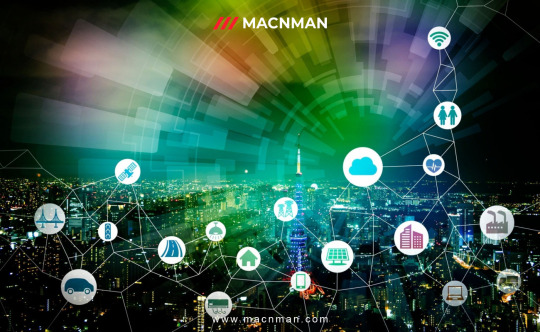
LoRaWAN specifically pertains to the networking protocol found within the MAC (Media Access Control) layer. In contrast, LoRa serves as a protocol within the physical layer. Although current LoRaWAN networking implementations utilize LoRa as the physical layer, it's worth noting that the LoRaWAN protocol also allows for the use of GFSK (Gaussian Frequency-Shift Keying) as the physical layer in specific frequency bands. From a network layering perspective, LoRaWAN can adopt various physical layer protocols, just as LoRa can serve as the physical layer for other networking technologies.
LoRa, as a technology, falls under the category of LPWAN (Low-Power Wide-Area Network) communication technologies. It represents an ultra-long-distance wireless transmission method based on spread spectrum technology, pioneered and promoted by Semtech in the United States. This approach revolutionizes the previous trade-off between transmission distance and power consumption, offering users a straightforward system capable of achieving extended range, prolonged battery life, and increased capacity. Consequently, it expands the capabilities of sensor networks. Currently, LoRa predominantly operates within free frequency bands globally, including 433/868/915MHz, among others.
On the other hand, LoRaWAN wireless communication stands as an open standard defining the communication protocol for LPWAN technology based on LoRa chips. LoRaWAN defines the Media Access Control (MAC) layer at the data link level and is overseen by the LoRa Alliance. It's crucial to distinguish between LoRa and LoRaWAN because companies like Link Labs utilize a proprietary MAC layer in conjunction with LoRa chips to create more advanced hybrid designs, such as Link Labs' Symphony Link.
LoRaWAN typically employs a star or star-to-star topology, which is generally considered superior to mesh networks due to advantages such as conserving battery power and extending communication range. In a star topology, messages are relayed to a central server through gateways, and each end node can transmit data to multiple gateways. These gateways then forward the data to the web server, where tasks like redundancy detection, security checks, and message scheduling are executed.
In summary, LoRa encompasses solely the link layer protocol, making it suitable for point-to-point (P2P) communication between nodes. In contrast, LoRaWAN includes the network layer, allowing data to be sent to any base station connected to a cloud platform. By connecting the appropriate antenna to its socket, the LoRaWAN module can operate at different frequencies, offering versatility in its applications.
0 notes
Text
BLIIoT Remote Monitoring RTU Gateway S275 Provides an Efficient Solution for Pipeline Monitoring

Foreword
Pipeline systems play an important role in various industries such as water supply, natural gas transportation, and chemical production. However, the safety and reliability of pipelines are crucial to ensuring the normal operation of the system.
The use of IoT technology can not only achieve the goal of visualizing and digitizing pipeline integrity management, but also minimize time and space risk factors to ensure safe and smooth operation of pipelines.
Pipeline Monitoring Requirements
In pipeline monitoring applications, the following parameters typically need to be monitored:
Liquid Level Monitoring: Make sure the liquid in the pipeline is at a safe level to avoid leaks or excessive water discharge.
Temperature Monitoring: Monitoring the temperature within pipes can help prevent overheating or undercooling.
Pressure Monitoring: Maintain normal pressure within the pipeline to ensure normal operation of the system.
Leak Detection: Detect leaks promptly to avoid environmental damage and personnel safety issues.
Valve Status Monitoring: Monitor the opening or closing status of the valve to achieve remote control.
etc.
Application of Remote Monitoring Gateway S275 in Pipeline Monitoring

Data Collection and Monitoring
Remote Monitoring Gateway S275, which supports RS485 and multiple IO channels, the sensor can be easily configured to monitor various parameters of the pipeline system in real time. By connecting analog and digital sensors, the device can collect data such as level, temperature, pressure, etc. and save it in an internal database for subsequent analysis and reporting. This helps identify potential problems early and take appropriate action.
Alarms and Notifications
Remote Monitoring Gateway S275 has a powerful alarm function, and users can set alarm thresholds based on monitoring data. Once these thresholds are exceeded or dropped, the device will trigger an SMS alarm to notify relevant personnel. This real-time alert can help take quick action to reduce potential risks.
Remote Control
Maintaining the safety and reliability of your pipeline system is not just about monitoring, but also about real-time control. The relay outputs of Remote Monitoring Gateway S275 can be used to control valves, pumps and other equipment to remotely close or open them when necessary. This remote control capability helps reduce risk and improve operational efficiency.
Data Upload and Integration
Remote Monitoring Gateway S275 supports multiple communication protocols such as SMS, Modbus, MQTT, etc., and transmits data to cloud platforms, SCADA, etc. This means pipeline monitoring data can be integrated into cloud solutions, enabling remote access, data visualization and analysis. In addition, the device is also compatible with multiple public cloud platforms such as Huawei Cloud and Alibaba Cloud, as well as users' private cloud platforms.
Summarize
Remote Monitoring Gateway S275 is a powerful IoT terminal device that can be widely used in the field of pipeline monitoring. Provides comprehensive data collection, monitoring, alarm and control functions, while supporting multiple communication protocols and cloud platform integration to ensure the safety and reliability of the pipeline system. Whether it is water supply, natural gas transmission or chemical production, Remote Monitoring Gateway S275 can provide efficient solutions for pipeline monitoring.
More information about BLIIoT Remote Monitoring RTU Gateway S275: https://www.bliiot.com/m2m-rtu-p00175p1.html
0 notes
Text
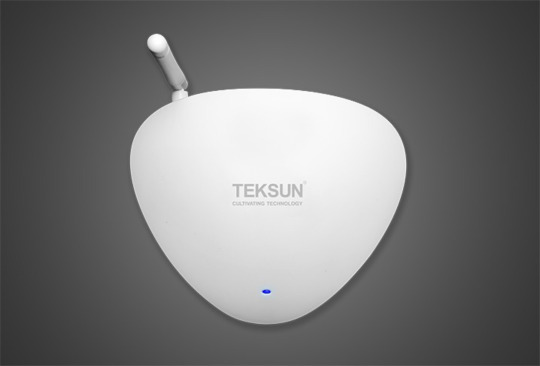
Teksun's cutting-edge solution for IoT & AI EDGE Gateway that communicate with the different smart devices. To know more, visit @ https://teksun.com
0 notes
Text
The Future is Connected: 5 Top IoT Trends to Watch in 2023
IoT is transforming how we live and work as a result of the quick advancement of IoT technology. IoT is altering not only the way we live, but also the way we think in this linked world. The Internet of Things has been applied everywhere, from smart cities to smart homes, smart transportation to smart healthcare, etc. This article will introduce 5 must-see IoT trendsᅠthat will help us better grasp this IoT world of limitless potential.
Trend 1: Convergence of AI and IoT
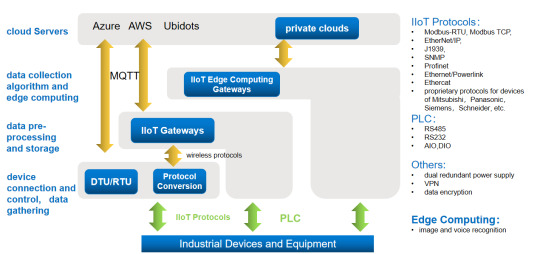
By utilizing sophisticated algorithms and machine learning techniques, devices like IoT Edge gateway can analyze and interpret data in real time, make informed decisions and take autonomous actions. The combination of AI and IoT enables IoT devices to adapt to changing environments, optimize their operations and provide users with a personalized experience. AI can enhance IoT devicesin the following ways:
Sophisticated Data Analysis
AI algorithms can process and analyze the massive amounts of data generated by IoT. IoT devices can identify trends, abnormalities, and patterns in data by leveraging methods like machine learning and deep learning. This analysis provides valuable insights for optimizing processes, predictive maintenance, and detecting potential risks or fanalysis.
Intelligent Automation
AI enables IoT devices to intelligently automate tasks and processes. IoT devicesᅠmay automate routine tasks, change settings, and reduce energy usage by learning from past data and user behavior. For instance, a smart thermostat may learn how the inhabitants want their temperature and regulate the heating or cooling appropriately, saving energy and enhancing comfort.
Real-time Decision
IoT devices can use artificial intelligence to make choices in real time based on the data they gather and examine. This makes it possible to respond quickly to changing conditions or events.ᅠFor instance, AI algorithms may evaluate patterns of power consumption in smart grid systems and modify power distribution to guarantee effective use and avoid blackouts.
Trend 2: 5G promotes the advancement of IoT
The Internet of Things is expanding quickly, and as its many sensors and gadgets go online, they will gather enormous volumes of data. 5G is the fifth generation of mobile communication technology. High speed, low latency, and enormous capacity are its key characteristics.ᅠIn IoT applications, it can provide faster data transmission speed and more stable and efficient network support.
The Internet of Things will be able to achieve higher transmission speeds and reduced latency when 5G technology is widely adopted, which will have a significant influence on many Internet of Things applications. Some applications, such real-time monitoring, remote control, smart manufacturing, etc., which are now constrained by network speed and latency, will be able to achieve more efficient and quicker data transfer and processing, increasing efficiency and lowering costs.
In addition, the large bandwidth capability of 5G technology will make it easier to transmit high-definition video, which is very beneficial for applications in smart cities, smart transportation and other fields. For example, to accomplish more accurate and real-time road condition analysis, enhance traffic flow, and lessen congestion in intelligent transportation, the data on road condition acquired by high-speed cameras may be communicated in real-time to the central control system.
Applications like self-driving vehicles will benefit greatly from 5G's reduced latency characteristics. Fast and low-latency data transfer is essential in self-driving automobiles so that the vehicle can gather knowledge about its surroundings in time for immediate decision-making and action.
Trend 3: Wide uses of Sensors
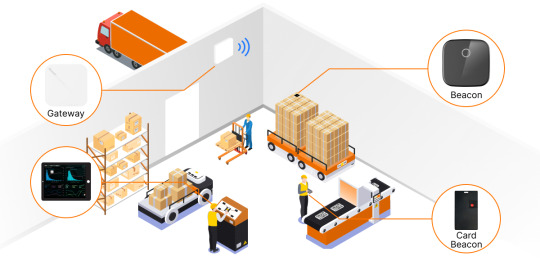
Sensors can be used in the medical industry to track patients' physiological parameters, such as their heart rate, blood pressure, blood sugar, etc., enabling remote monitoring and prompt patient intervention. In order to achieve intelligent traffic management and optimization, sensors may be utilized in the transportation sector to monitor things like road conditions, vehicle and pedestrian movement, etc. The use of sensors in the industrial sector can enable smart production and preventive maintenance by tracking the operational conditions, temperature, pressure, etc. of machinery and equipment. Sensors may be used in the smart home to monitor how much energy is consumed by each appliance, and the smart gatewayᅠcan evaluate this data and automatically change the power consumption mode of these appliances to save energy.
What’s more, the wide application of sensors will bring more data, which will provide more opportunities for data analysis and technological innovation. By combining artificial intelligence and big data analysis, we can better understand and predict various scenarios, so as to formulate more accurate strategies and decisions.
Trend 4: The Rise in Popularity of Smart Homes
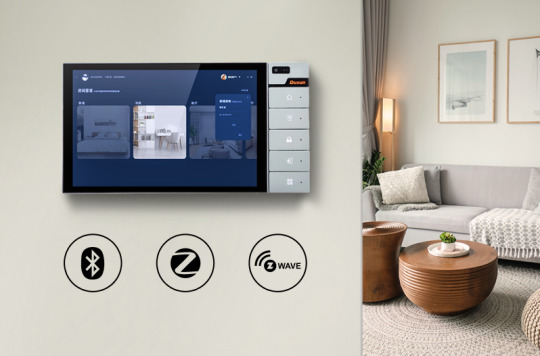
Remote Control
First, IoT technology enables smart home gadget remote control. Users may operate electrical appliances, lighting, security systems, and other things at home whenever and wherever they want using mobile phone applications or other smart devices. For instance, users can change the temperature before they leave the house, switch on the door locks, and turn on the heating before they go home.
Automated Operation
Second, smart device automation is a reality thanks to Internet of Things technologies. Smart home appliances are able to react automatically to user actions or events in the house thanks to predefined rules or clever algorithms. For instance, the smart door lock might be set to activate immediately when the user opens the door, the light could be set to the proper brightness and color temperature, and the TV could be set to automatically switch on and start playing the user's preferred show.
Security Enhancement
The security of the home can also be enhanced by IoT technology. Smart home gadgets, such as door and window opening and shutting, smoke alarms, etc., may be linked to the security system to track the security status of the house in real time. These devices can simultaneously evaluate and forecast user behavior patterns using big data in order to send out alarms on time or take appropriate action in anomalous circumstances.
Data Sharing
Last but not least, IoT technology can facilitate the networking and sharing of home appliances. Smart home appliances may exchange data and resources with other smart devices to provide more sophisticated services. Voice assistant, for instance, may be linked to other smart devices to provide voice control and intelligent question-and-answer functionality, offering customers additional practical life services.
Trend 5: The Explosive Growth of Wearable Devices
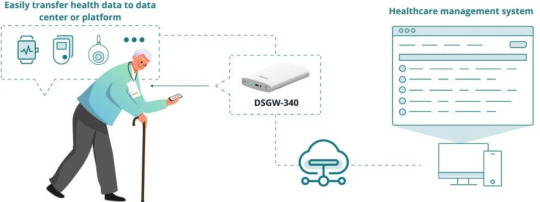
More Personalized Services
As technology continues to improve and innovate, IoT wearable devices will be better equipped to track users' physiological and activity data, enabling more individualized and tailored services for consumers. Wearable technology, for instance, can offer more precise health management and exercise suggestions depending on the user's health state and activity data.
More Advanced User Interaction
As artificial intelligence technology advances, wearable IoT devices will be able to communicate with people in a more sophisticated way. Users can more easily operate other smart devices with wearable technology or access more sophisticated services, for instance, through voice recognition, gesture recognition, and other technologies.
More Efficient Data Analysis
As big data technology advances, the information gathered by IoT wearable devices will be processed and used more effectively. We can better understand consumer demands and behavior patterns through data mining and analysis, enabling us to offer services that are more precise.
Richer Application Scenarios
Wearable technology will be used in more situations as it continues to advance and innovate, including those involving health care, sports, security, education, etc. For instance, remote education using smart glasses, remote medical care through smart watches, etc.
Final Words
IoT is generally the way of the future, and it is revolutionizing both our personal and professional lives.We have reason to anticipate that the Internet of Things will offer more shocks and improvements as science and technology continue to advance, improving the intelligence, convenience, and beauty of our lives.
0 notes
Text

IoT gateways play a crucial role in smart technology ecosystems by aggregating and processing data from various devices, ensuring seamless communication and interoperability.
#RS 485 IoT Gateway Solutions#Industrial IoT Gateway Solutions#industrial iot gateway devices#IOT gateway devices#IIoT gateway devices#MQTT IoT gateway#iot gateway manufacturers#Top IoT gateway companies#IoT gateway company#iot gateway solutions#modbus gateway#rs485 gateway#rs485 protocol#modbus rs485#modbus communication protocol#rs485 iot gateway#modbus protocol#iot gateway
0 notes
Text
Live stream happened, and we got some designs revealed! As well as a couple of information, but not anything major.

Miss conductor, not much of a surprise (but miss girl looks gorgeous as always)

And Node, who is sort of the main antagonist.
I made a prediction before, and April 21 hit,.. so I believe it is well due for an update by now.
While we did not receive nearly as much information as we were anticipating, a design still reveals much on the character itself when going through the lens of a general analysis. In this context, their abilities and name aid significantly in the status and essential depths of their character.
With what I can gather in my research, nodes play an important role in networking because they are the building blocks of a network, precisely the gateway for connection, direction, sending, creating, receiving, and storing data. It requires only software to connect to the network, and it can be run by completely anyone. Applying this knowledge with concept arts of the game and overall worldbuilding of the series itself—everything becomes a lot clearer.
So now, how can we apply this to Node?

Node's name is simple in itself, and it connects to their design as well. They are quite literally made up of nodes. One in their head and the other in their limbs. Their body is translucent.
Network nodes are categorical. Thanks to DJ, we got a helpful hint that incredibly reduced their types to a digestible and simpler layout.
Their name starts with i.
There are countless forms and types of nodes, the hint condensed it down to 2 answers, both starting with the letter “i”
Intermediate nodes
These include devices like routers and switches that help direct data to the correct destination while also receiving it. They don't originate or terminate data but instead pass it along to where it needs to go.
IoT nodes
loT (Internet of Things) Nodes serve as devices that establish connectivity to the Internet via a gateway, effectively enabling the integration of the physical world into the vast realm of the Internet. Within an loT ecosystem, these nodes function as crucial components for bridging the gap between the physical and virtual worlds. Taking charge of managing the entire loT system.
We had seen this ability before vía King's icons' staff, in which it only sucked in Minecraft mobs due to the strong force being their obligatory origin, overriding the game itself due to the overlapping icons.
In regards to King, he used this ability for the very destruction of the game itself, down to the code, reducing it to nothing but.. nothing for the sake of vengeance. Or at least what would have occurred if he did succeed.
way to go CG! Give credit where it's due
Despite this being marked with the intention of erasion and minimization, I think it's safe to group this as receiving and storing data. The two icons combined created a horrifically dramatized version of the force with storing and receiving, which created an incredibly overpowered demolishing force.

In Chosen, we had seen this ability before as well, as the constellations are seen right as he creates the gateway from the Outernet, which sounds awfully familiar. This is what you would refer to as an "extension to the digital world"
I think I can be able to safely group this to direction and creation.


From how I see it, it seems as though it's quite diverse in a fictional worldbuilding sense within characters.
And obviously, it won't be the last time we would see it. It seems as though we would be exploring this quite a lot.


In their cameo, Node is in an assumed line-up with all the major series antagonists.

But if you’re asking me, it seems as though our iconic antagonists appear to be rather victims of Node. Menacingly behind them, their abilities floating not far behind as they're stuck in a swampy substance. But that's just me.
Node's entire antagonistic ordeal is beyond my grasp, but I'm assuming their abilities and attacks surrounds the embodiment of network topology, which would mold and diverse into the connections of nodes. They possibly intend to screw up with the gateways that are responsible for the receiving, directing, and sending of data between various devices through communication links that are defined as network—with the basic visuals of concept art we were given.

(The gateway, ethernet tunnels, the train cough cough)
Node's goal and story behind that destruction remains anonymous, as the writing is still in early development. Regardless, food for thought.
#alan becker#animation vs minecraft#animator vs animation#animation versus#nerd voyage#it's pretty interesting#though my research is still ongoing#when i say it's diverse..#yeah it's diverse alright
86 notes
·
View notes
Text
annoyingly the most influential thing in my head from Murderbot is the Feed. The Feed is so appealing as a concept. A universally comprehensible and widely accessible mesh-based standard for mixed machine and human communication with a reliable subscription service, that has a ton of things publishing constantly by default but with a robust (assuming no rogue antisocial biological hypercomputers) cryptographic system for secret data. The Feed very clearly can scale up to an entire space station network or down to one person and their accoutrements forming a personal area network.
Some kind of hierarchical MQTT implemented on a mesh network with public key cryptography could get you so close if you just standardized ways to get the MQTT schema of any given endpoint. After that it's all dashboarding. Publish as much or as little information as you want and allow any given device to access that data and respond to it.
Some of this is probably leftovers from $PREVJOB. When I was doing industrial automation our entire fleet of devices lived on a strict schema under one MQTT server that I had complete read/write for so by doing clever subscriptions I could sample anything from a temperature reading from a single appliance in the back of the restaurant I was standing in to accumulating the overall power draw of every single business we were working with all at once.
On more than one occasion something silently broke and I drove up near the back of a facility in my car where I knew the IoT gateway was, connected to our local IoT network over wifi, fixed the issue, and left without telling anyone.
Unfortunately if the Feed existed people like me would make extremely annoying endpoints. To be fair canonically the Feed is absolute dogshit unless you have an Adblock. So really it would be exactly the same as in the books.
148 notes
·
View notes
Text
IoT Gateway Devices: Powering Intelligent Connectivity with Creative Micro Systems
As the Internet of Things (IoT) continues to revolutionize industries from manufacturing to healthcare, one critical component is making this interconnected world possible—IoT gateway devices. At Creative Micro Systems, we specialize in designing and manufacturing high-performance IoT gateway devices that enable secure, seamless, and intelligent data flow in connected environments.

What Are IoT Gateway Devices?
IoT gateway devices serve as communication hubs in an IoT architecture. They collect data from various IoT sensors and devices, perform local processing or filtering, and transmit the data to cloud-based platforms or enterprise servers for further analysis. These devices bridge the gap between the physical world and digital infrastructure, ensuring that only relevant, actionable data is transmitted—improving efficiency and reducing bandwidth consumption.
In addition to data transmission, gateways are responsible for translating different communication protocols (like Zigbee, LoRa, Bluetooth, and Modbus) into formats compatible with cloud systems. They also add a crucial layer of security, performing encryption, authentication, and even real-time anomaly detection.
At Creative Micro Systems, we understand that no two IoT applications are the same. That’s why we offer custom-built IoT gateway devices tailored to meet the specific needs of each client. Whether you’re managing a smart agriculture project or overseeing a smart factory floor, our gateway solutions are designed for reliability, scalability, and security.
Our IoT gateways come equipped with:
Multi-protocol support for seamless device interoperability
Low power consumption, ideal for remote or resource-constrained environments
Advanced cybersecurity features, including encrypted communication and secure boot
OTA (Over-the-Air) updates to keep firmware current without manual intervention
Industry Applications
Creative Micro Systems' IoT gateway devices are deployed across a range of industries:
Industrial Automation: Monitor machinery performance and detect anomalies before failures occur
Healthcare: Enable secure patient monitoring and data sharing between medical devices
Smart Cities: Manage energy usage, traffic systems, and public infrastructure from a unified platform
Each gateway is engineered to operate in harsh conditions, with rugged enclosures and reliable wireless and wired connectivity options, making them suitable for both indoor and outdoor deployments.
Why Choose Creative Micro Systems?
Our strength lies not only in our cutting-edge technology but also in our collaborative approach. From initial consultation to final deployment, Creative Micro Systems works closely with clients to ensure each solution is aligned with their operational goals. Our in-house R&D, firmware development, and quality assurance teams guarantee a seamless experience from concept to execution.
IoT gateway devices are more than just data conduits—they're the brain of your IoT network. With Creative Micro Systems, you're choosing a partner committed to innovation, customization, and long-term value. Explore the future of connected intelligence with us.
0 notes
Text
The Rise of 5G and Its Impact on Mobile App Development

5G isn’t just about faster internet — it’s opening up a whole new era for Mobile App Development. With dramatically higher speeds, ultra-low latency, and the ability to connect millions of devices seamlessly, 5G is transforming how developers think about building apps. From richer experiences to smarter services, let's explore how 5G is already reshaping the mobile app landscape in 2025 and beyond.
1. Lightning-Fast Data Transfer
One of the biggest promises of 5G is incredibly fast data transfer — we're talking about speeds up to 100 times faster than 4G. For mobile apps, this means that large files, high-resolution images, and HD or even 4K video content can be downloaded or streamed instantly. Apps that once needed to compress their data heavily or restrict features due to bandwidth limits can now offer fuller, richer experiences without worrying about lag.
2. Seamless Real-Time Experiences
5G dramatically reduces latency, meaning the time between a user action and the app’s response is almost instant. This will revolutionize apps that rely on real-time communication, such as video conferencing, live-streaming platforms, and online gaming. Developers can create much more responsive apps, allowing users to interact with data, people, and services with zero noticeable delay.
3. The Growth of AR and VR Mobile Applications
Augmented Reality (AR) and Virtual Reality (VR) apps have been growing, but 5G takes them to another level. Because of the high bandwidth and low latency, developers can now build more complex, interactive, and immersive AR/VR experiences without requiring bulky hardware. Imagine trying on clothes virtually in real-time or exploring a vacation destination through your phone — 5G is making this possible within Mobile App Development.
4. Smarter IoT-Connected Apps
The Internet of Things (IoT) will thrive even more in a 5G environment. Smart home apps, connected car apps, fitness trackers, and other IoT applications will be able to sync and update faster and more reliably. Developers can now integrate complex IoT ecosystems into mobile apps with minimal worries about network congestion or instability.
5. Enhanced Mobile Cloud Computing
Thanks to 5G, mobile cloud computing becomes much more viable. Instead of relying solely on local device storage and processing, apps can now store large amounts of data and execute processes directly in the cloud without latency issues. This allows users with even mid-range smartphones to experience high-performance features without the need for powerful hardware.
6. Revolutionizing Mobile Commerce
E-commerce apps are set to benefit greatly from 5G. Instant-loading product pages, real-time customer support, virtual product previews through AR, and lightning-fast payment gateways will enhance user experience dramatically. This could lead to higher conversion rates, reduced cart abandonment, and greater user loyalty in shopping apps.
7. Opportunities for New App Categories
With the technical limitations of mobile networks reduced, a whole new range of apps becomes possible. Real-time remote surgeries, autonomous vehicles controlled via mobile apps, and highly advanced telemedicine solutions are just a few examples. The doors are open for mobile developers to innovate and create applications that were previously impossible.
8. Better Security Requirements
With 5G’s mass connectivity also comes a bigger responsibility for security. As mobile apps become more connected and complex, developers must prioritize data protection, encryption, and secure authentication methods. Building security deeply into Mobile App Development workflows will be critical to maintain user trust.
9. More Demanding User Expectations
As 5G rolls out globally, users will expect every app to be faster, smoother, and more capable. Apps that fail to leverage the benefits of 5G may seem outdated or sluggish. This shift will push developers to continually optimize their apps to take advantage of higher speeds and smarter networking capabilities.
10. Preparing for the 5G Future
Whether you’re building entertainment apps, business solutions, healthcare tools, or gaming platforms, now is the time to adapt to 5G. Developers must start thinking about how faster speeds, greater device connections, and cloud capabilities can improve their mobile applications. Partnering with experts in Mobile App Development who understand the full potential of 5G will be key to staying ahead in a rapidly evolving digital world.
3 notes
·
View notes
